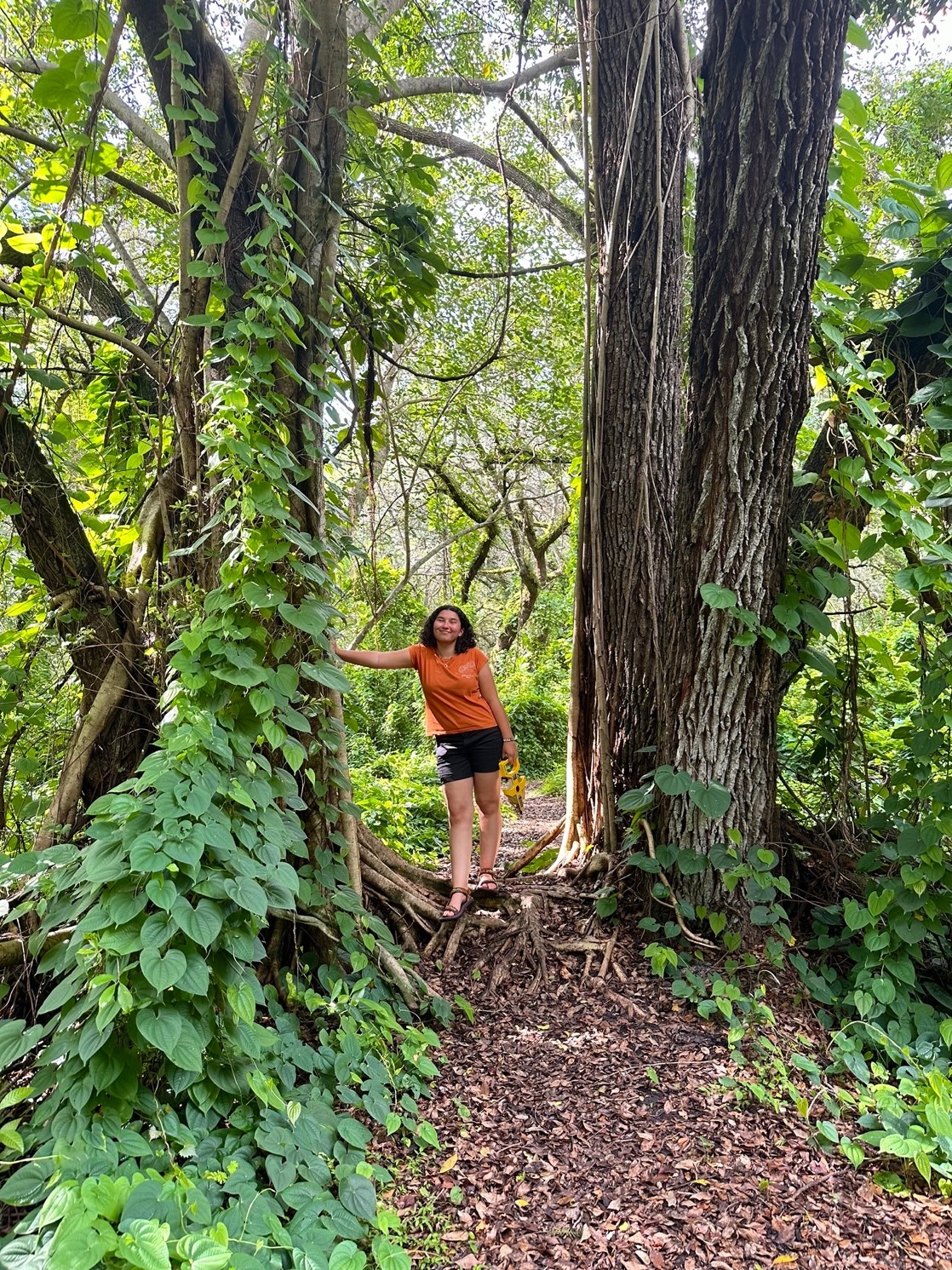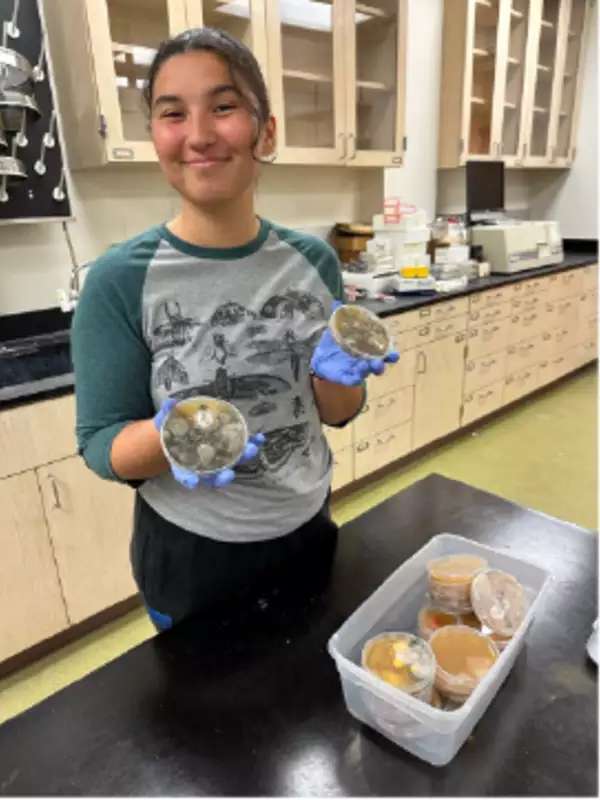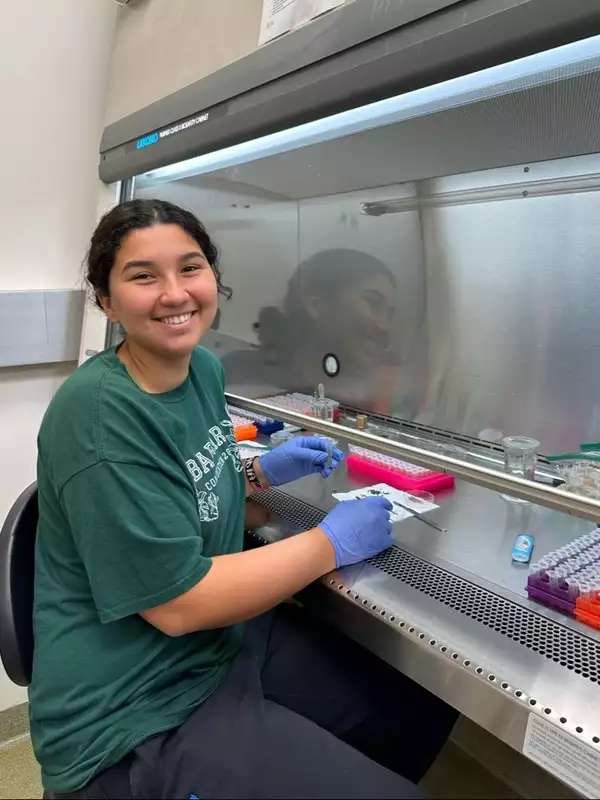Blog post #3 by Nadia Alhassani
As the summer draws to a close, our project has yielded over 6,000 fungal cultures extracted from our leaves. Out of the 128 leaves sampled, we have identified over 150 unique fungal species based on their physical characteristics. While I will soon be leaving the project, my teammates will continue to extract the fungal DNA for subsequent sequencing. After we receive the sequence data, we will be able to answer our project’s original questions: Do fungal communities vary based on leaf light exposure and health status?
With the preliminary data that we have gathered, a noteworthy pattern emerges: We see a robust set of recurring fungi. This group primarily consists of a subset of white, fuzzy fungi with black spores and a subset of light-to-dark green fuzzy molds. This pattern is very interesting as some of our locations are an hour away from each other, and yet, they show the same type of fungal communities. To understand this pattern further, we must identify what these species are and why they might be so prevalent on tropical tree leaves. My teammates will further examine whether these fungi may help or hurt the trees by conducting inoculations on seeds and seedlings. This information will allow us to better understand the identities and functions of these fungi on tropical trees.
This experience has been quite enriching, allowing me to learn not only in the lab, but in the process of creating, designing, and workshopping a scientific project. I have had the opportunity to join this project from its beginning and input my ideas and knowledge into it. We have had to overcome many hurdles and come up with novel solutions to issues we hadn’t thought about in the beginning. Doing research on such an upcoming field is extremely interesting, but also comes with its fair share of obstacles. This experience has really given me insight into how research is done and how I can contribute to the scientific field in a meaningful way.
I want to extend my gratitude to the Zalamea lab for graciously hosting me this summer and embracing my ideas into this project. Thank you for welcoming me with open arms and a warm heart, it has really made all the difference. And of course, I want to express my appreciation to Barnard for granting me the Herbert Maule Richards Grant, which has allowed me to conduct this research.
For those considering scientific research in the future, I highly recommend that you find a project that you are passionate about and that allows you to contribute to its creative design. Engaging in such an experience offers invaluable insight into how decisions are made in the scientific community, which is extremely important to grasp before embarking on your own research.



